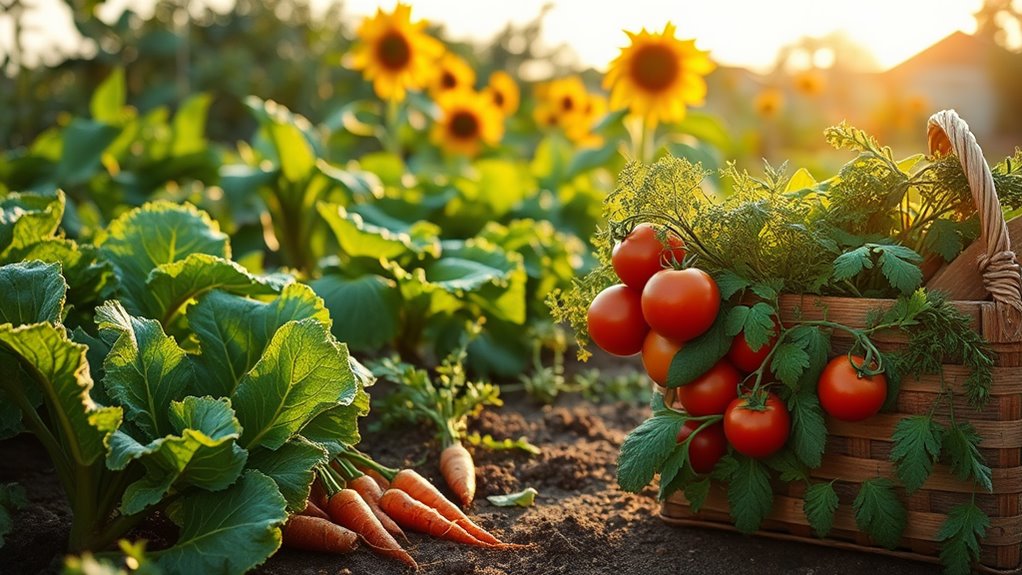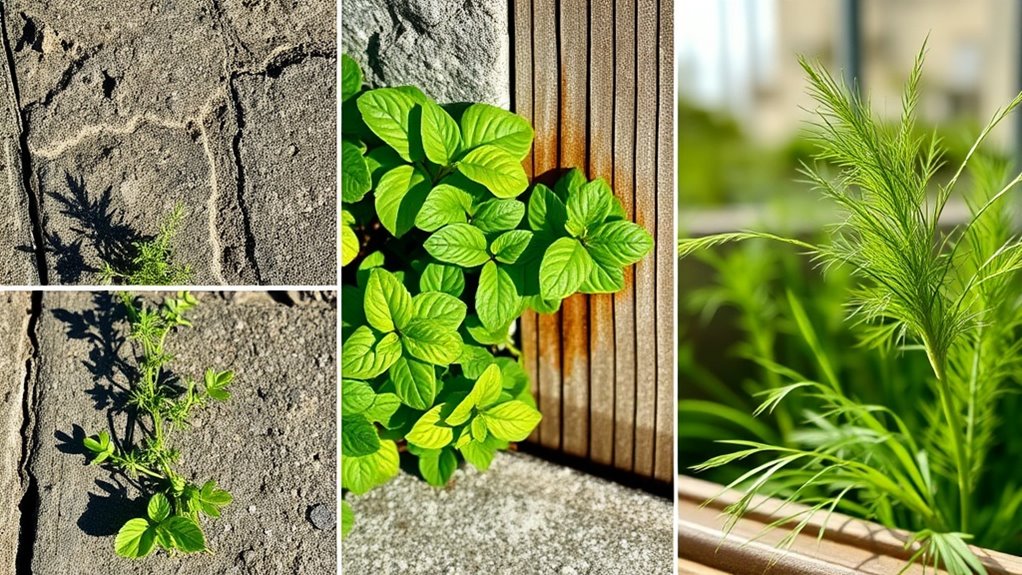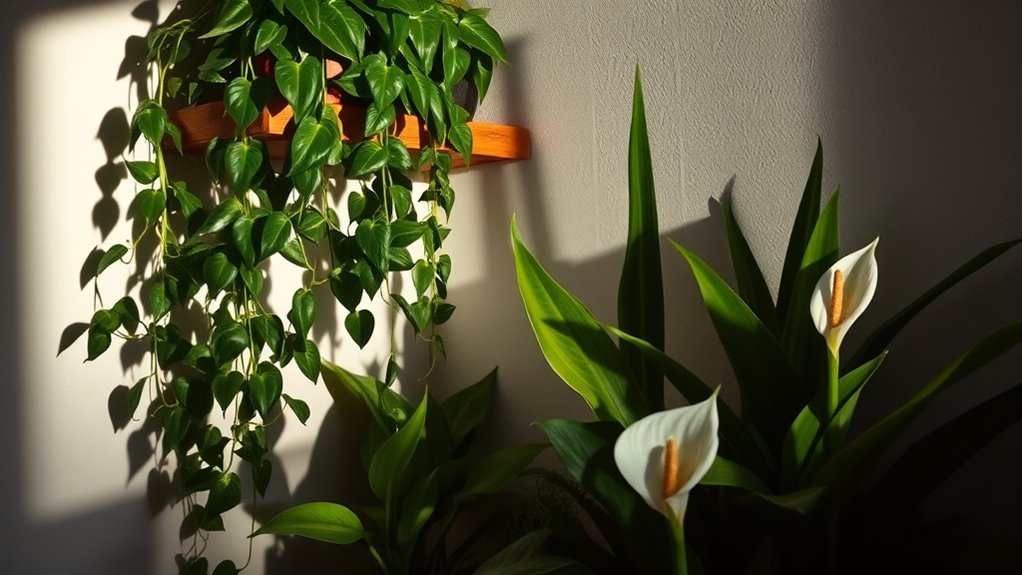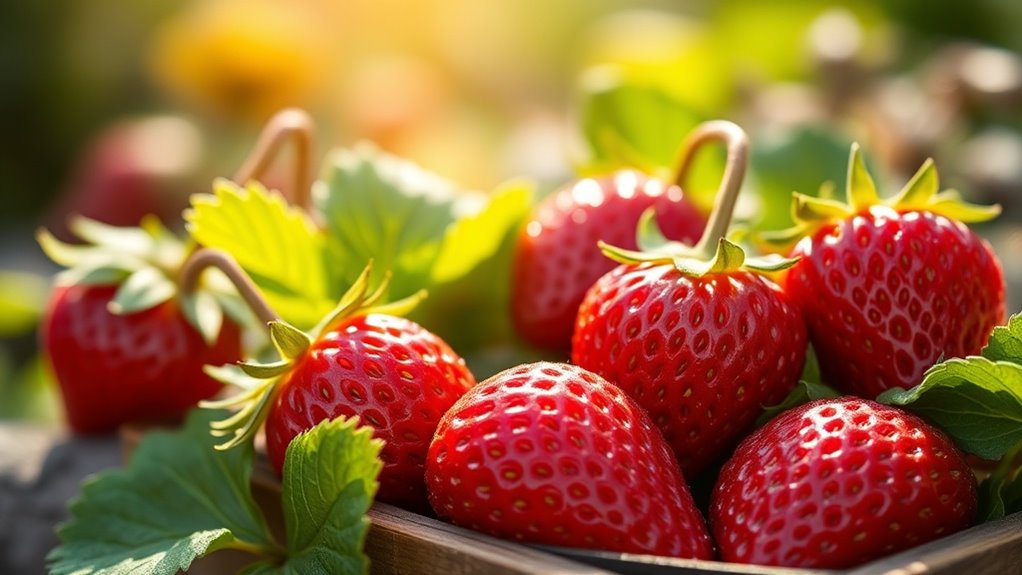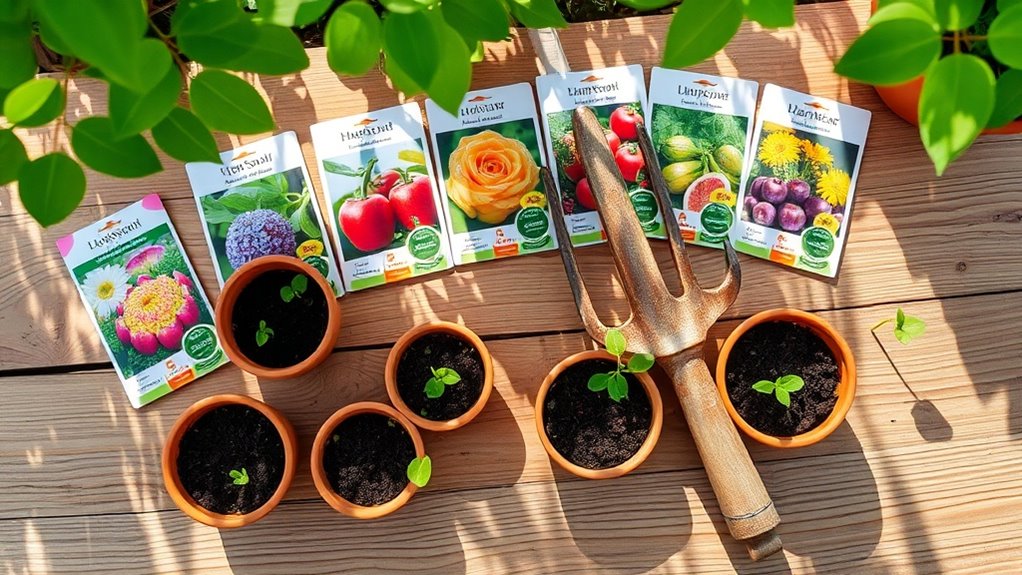Best Things to Plant in Late Summer Before the Cold Hits
As late summer arrives, it’s time to think about what to plant before the cold sets in. You can maximize your garden’s output by focusing on cool-season vegetables like spinach and kale, while adding vibrant hardy annual flowers to attract pollinators. Don’t forget about perennial herbs and fall-blooming bulbs to enhance your garden’s aesthetic and functionality. Curious about the best strategies for sowing these plants and preparing your soil?
Key Takeaways
- Sow cool-season vegetables like spinach, kale, and radishes for a fresh harvest before winter.
- Plant hardy annual flowers such as pansies and snapdragons for vibrant colors that endure frost.
- Establish perennial herbs like rosemary and thyme for a flavorful, low-maintenance garden that returns yearly.
- Incorporate fall-blooming bulbs, including autumn crocus and dahlias, to add seasonal beauty as temperatures drop.
- Use cover crops like clover and rye to improve soil health and structure while preparing for spring planting.
Cool-Season Vegetables
As summer begins to fade, it’s the perfect time to think about planting cool-season vegetables that thrive in the crisp air of fall.
Late summer planting allows you to enjoy a fresh harvest just as temperatures drop.
Consider sowing seeds for spinach, kale, and radishes, which grow best in cooler conditions.
Be sure to prepare your soil by adding compost for nutrients.
Planting these vegetables now means you’ll have delicious greens ready to harvest before winter sets in.
Keep an eye on the weather, and use row covers if frost threatens.
Enjoy the rewarding experience of a fall garden! Additionally, many gardeners find that late summer sowing can lead to successful crops just before the cold sets in.
Hardy Annual Flowers
After you’ve planted your cool-season vegetables, consider adding hardy annual flowers to your late summer garden. These flowers thrive in cooler temperatures and can brighten your landscape as the seasons change. Here are four excellent options to plant now:
- Pansies – Their vibrant colors can withstand frost, adding beauty until winter.
- Snapdragons – These tall blooms bring vertical interest and can handle chilly nights.
- Calendula – Known for its cheerful yellow and orange hues, it attracts pollinators.
- Sweet Alyssum – This low-growing flower emits a lovely fragrance and self-seeds easily.
Additionally, planting hardy annual flowers can enhance your garden’s resilience and beauty for the upcoming colder months. Enjoy a colorful fall garden!
Perennial Herbs
Perennial herbs are a fantastic addition to your late summer garden, offering both culinary delights and a burst of greenery.
Consider planting rosemary, thyme, or oregano, as they thrive in well-drained soil and full sun.
These herbs not only enhance your meals but also attract beneficial insects.
Make sure to water them regularly, especially during dry spells, and apply a layer of mulch to retain moisture.
As temperatures cool, you can still harvest fresh leaves to elevate your dishes.
With minimal care, these hardy herbs will return year after year, ensuring your garden remains vibrant and productive. Additionally, many of these herbs have potent healing properties that can support your health and well-being.
Fall-Blooming Bulbs
If you want to add vibrant color to your garden in the fall, consider planting bulbs like colchicum and autumn crocus.
Knowing the ideal varieties, proper planting techniques, and seasonal care tips will ensure your bulbs thrive.
Let’s explore how to make the most of these stunning late-season blooms.
Ideal Bulb Varieties
As summer wanes, it’s the perfect time to think about planting fall-blooming bulbs that can add vibrant color to your garden when many other plants start to fade.
Consider these ideal bulb varieties:
- Autumn Crocus – These stunning flowers bloom in shades of purple and white, creating a lovely contrast against autumn foliage.
- Nerine – Known for their striking pink blooms, Nerines thrive in well-drained soil and bring a unique flair.
- Colchicum – Often called autumn crocus, they produce large, goblet-shaped flowers that pop up in the fall.
- Dahlia Bulbs – With a variety of colors and sizes, dahlias can extend your garden’s bloom time beautifully.
Planting Techniques
When planting fall-blooming bulbs, timing and technique are crucial for ensuring vibrant blooms come autumn.
Start by choosing a spot with well-drained soil and adequate sunlight. Dig holes about 6 to 8 inches deep, placing bulbs with the pointed end facing up. Space them at least 4 to 6 inches apart for optimal growth.
After positioning, cover them with soil and water thoroughly. Mulching can help retain moisture and regulate temperature.
Remember to plant your bulbs in late summer, ideally 6 to 8 weeks before the first frost, to give them a chance to establish roots before winter arrives.
Seasonal Care Tips
Proper care is essential for ensuring that your fall-blooming bulbs thrive and produce stunning displays.
Follow these tips to keep your bulbs healthy as the temperatures drop:
- Water regularly: Ensure consistent moisture, especially during dry spells, but avoid overwatering to prevent rot.
- Fertilize lightly: Use a balanced, slow-release fertilizer to provide nutrients without overwhelming the bulbs.
- Mulch: Apply a layer of mulch to retain moisture and suppress weeds as temperatures begin to cool.
- Protect from frost: If frost threatens, cover your bulbs with burlap or straw to shield them from cold damage.
With these steps, your bulbs will flourish this fall!
Cover Crops
Cover crops are a smart choice for gardeners looking to enhance soil health and prevent erosion during the late summer months. Planting legumes, like clover or vetch, can fix nitrogen in the soil, benefiting future crops. Grasses such as rye or barley improve soil structure and reduce compaction.
As you prepare your garden for winter, consider sowing these crops to suppress weeds and improve organic matter. Simply till them into the soil in spring for a nutrient boost. Additionally, incorporating natural tricks for healthier soil can further enhance soil quality and promote robust plant growth.
Remember to select cover crops suited to your climate and soil type for the best results. Your garden will thrive come spring!
Late Summer Salad Greens
Late summer is the perfect time to sow a variety of salad greens that thrive in cooler temperatures.
These greens not only grow quickly but also taste better with the drop in heat.
Here are four excellent options to consider:
- Spinach – Packed with nutrients, it germinates fast and can withstand light frosts.
- Lettuce – Choose varieties like butterhead or romaine for crunchy textures and flavors.
- Arugula – This peppery green grows quickly and adds zest to salads.
- Mustard Greens – With a spicy kick, they thrive in cooler weather and are easy to grow.
Plant now for a fresh harvest! Additionally, many of these greens can be harvested in just two weeks after sowing, making them an ideal choice for a quick garden boost.

